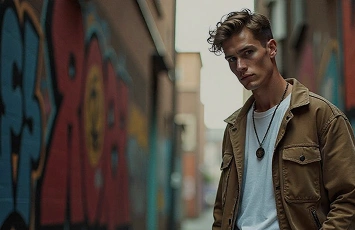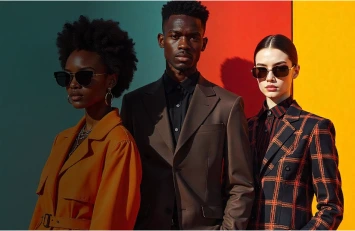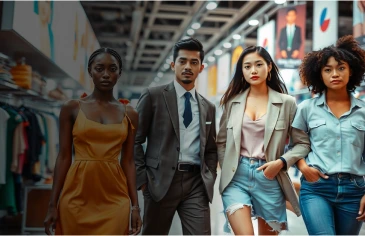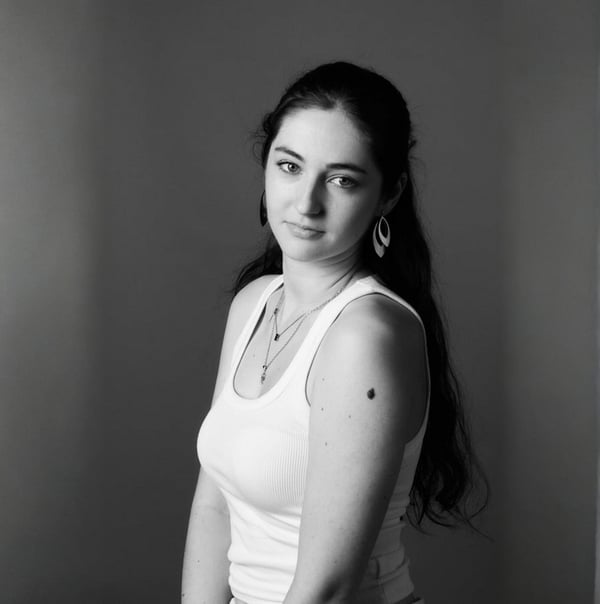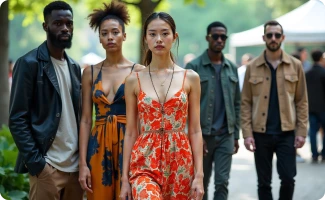

Influencer Marketing for Fashion Brands: Boosting Visibility Through Partnerships
Table of Contents
- Why Influencer Marketing Matters for Fashion Brands
- Types of Influencer Collaborations
- How to Choose the Right Influencers
- Setting Goals and Measuring Success
- Making It Easy for Influencers to Deliver
- Common Mistakes to Avoid
- How Modelia Can Help
- The Ultimate User Guide to Virtual Try-On Features: How to Get the Best Experience
- Recap
- FAQ: Influencer Marketing For Fashion Brands
Influencer marketing has become one of the most powerful tools in the arsenal of modern fashion brands. As consumers increasingly turn to social media for style inspiration, brands that leverage authentic voices can amplify their reach, build trust, and drive real business results. Whether you're launching a new collection or trying to grow your presence in a niche market, the right influencer marketing for fashion brands can make all the difference.
In this comprehensive guide, we’ll explore how fashion brands can collaborate effectively with influencers, from understanding the different types of partnerships to measuring ROI and avoiding common pitfalls.
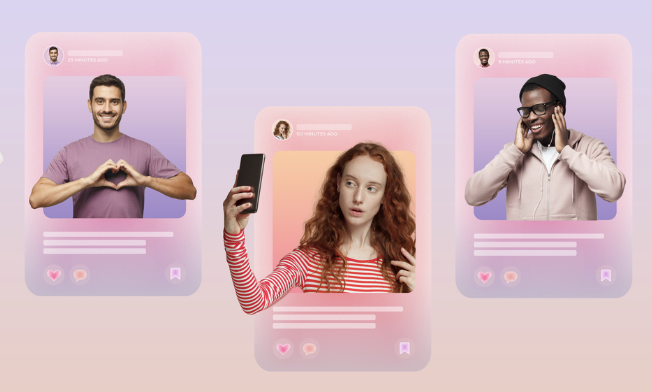
Why Influencer Marketing Matters for Fashion Brands
Fashion is visual, aspirational and highly influenced by cultural trends. Consumers often discover new brands through the content of people they admire online, and that's why influencers act as trusted curators, showcasing how products look, feel, and fit in real life. This personal connection can:
Increase brand awareness and create social proof
Drive targeted traffic to your online store or landing pages
Boost engagement on social media platforms
Create high quality, authentic content that can be reused in your own marketing channels
For example, if I see an amazing outfit in a influencer, I see how to style it and how it fits it is more likely I buy it than if I see it on store or in an eCommerce model.
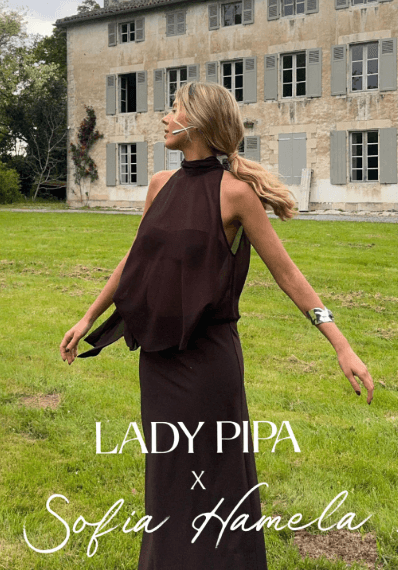
Types of Influencer Collaborations
There’s not only one approach for this, different types of influencer partnerships can serve different goals, from building brand equity to driving direct sales. Here's a breakdown:
Collaboration Type | Description | Best For |
|---|---|---|
Sponsored Posts | Influencer shares content promoting your product | Awareness & credibility |
Gifting / PR Packages | Send free products in exchange for organic mentions | Low-cost brand exposure |
Affiliate Marketing | Commission-based model for influencer-driven sales | Performance-driven campaigns |
Brand Ambassadorships | Long-term relationship with exclusive content deals | Loyalty and long-term positioning |
Co-created Collections | Collaborate on capsule drops or exclusive lines | Hype, trust, and creative alignment |
Takeovers & Live Events | Influencer hosts a live stream or runs your social for a day | Real-time engagement & trust |
UGC Contests | Invite influencer-led challenges to drive user content | Community-building & virality |
How to Choose the Right Influencers
Choosing the right influencer is more than a numbers game, you should focus on creators who genuinely align with your brand’s identity and values. Key factors to evaluate:
Brand Fit: Their aesthetic, tone, and values should mirror your brand’s persona.
Audience Quality: Look beyond demographics, does their community trust them? Are they aligned with your ideal customer profile?
Content Style: Will their visual and storytelling style elevate your brand?
Performance Metrics: Check historical engagement rates, video views, and conversion outcomes from past campaigns.
Pro tip: Micro-influencers (10K–100K followers) often have higher engagement rates and more niche authority, making them powerful allies for emerging or tightly-positioned brands.

Setting Goals and Measuring Success
Before launching any influencer campaign, it’s crucial to define what success looks like for your brand. Influencer marketing is a versatile tool, one that can be used to build awareness, drive sales, or strengthen long-term loyalty. But without clear objectives from the outset, even a beautifully executed collaboration can feel like a shot in the dark.
For some fashion brands, the primary goal might be to increase visibility and reach within a new demographic or geographic region. In this case, the focus would be on selecting influencers with high engagement and a following that aligns with your target customer. For others, success may mean directing traffic to a specific product page, such as a new seasonal collection or a best-selling item that's being reintroduced. Here, you'd want influencers who not only fit your brand but also have a proven ability to drive clicks and interest through strategic call-to-actions.
Alternatively, your objective may center around growing your owned audience by increasing newsletter signups or app installs. In this scenario, campaigns should be designed to offer value, such as exclusive early access or special content, so that audiences feel compelled to take that extra step beyond social engagement.
For conversion-focused campaigns, revenue generation becomes the main KPI. This is where affiliate links and influencer-specific discount codes come into play. These tools not only incentivize purchases but also provide a clear way to attribute sales directly to influencer activity.
If your goal is to deepen relationships with your existing audience, engagement metrics become the most relevant. Comments, shares, saves, and replies can help you gauge how resonant and relevant your message is. And the right influencer can spark deeper conversations and connections with your community, especially if they’re already a known and trusted voice within your niche.
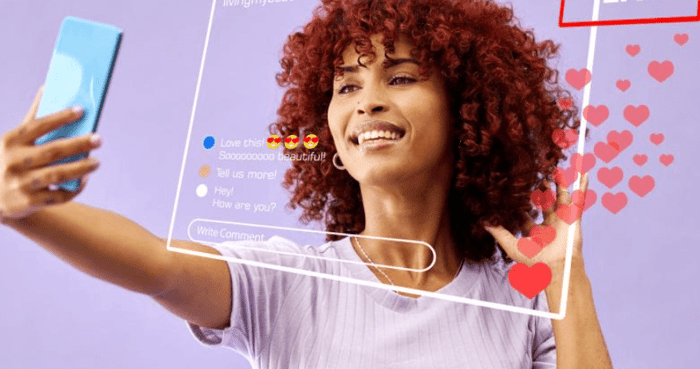
Tracking performance effectively requires more than just looking at surface-level numbers. To measure ROI, you'll need tools that can provide granular insights. UTM parameters in custom URLs allow you to see exactly how much traffic an influencer is driving. Discount codes and affiliate links help you connect purchases to specific creators. On the social side, native platform analytics give you a pulse on engagement and reach. For deeper insights, post-campaign surveys or brand lift studies can reveal shifts in perception and awareness that aren’t immediately visible in sales data.
To streamline this process and manage campaigns at scale, many fashion brands turn to platforms like CreatorIQ and Modash. These tools allow marketers to discover new creators, handle outreach and contracts, and consolidate performance data in one place. They also provide automated tracking for influencer-generated content, so your team can quickly identify what’s working, and what’s not.

Ultimately, setting clear goals isn’t just about accountability, it’s about alignment. When influencers, marketers, and creative teams all understand what success looks like, campaigns run smoother, content feels more intentional, and results become easier to achieve and replicate.
Making It Easy for Influencers to Deliver
A successful influencer campaign requires mutual trust and clear communication. While it's important to provide guidance, it's equally important to allow creators creative freedom to engage their audience authentically.
What to provide:
A well-designed brief outlining your campaign goals, brand tone, talking points, and preferred formats
Brand assets (logos, product details, styling guides)
Creative do’s and don’ts, without micromanaging
Fast delivery of samples or review products
Support before, during, and after content goes live
Bonus: High-performing influencer content can be repurposed across ads, landing pages, product detail pages, and even in-store signage.
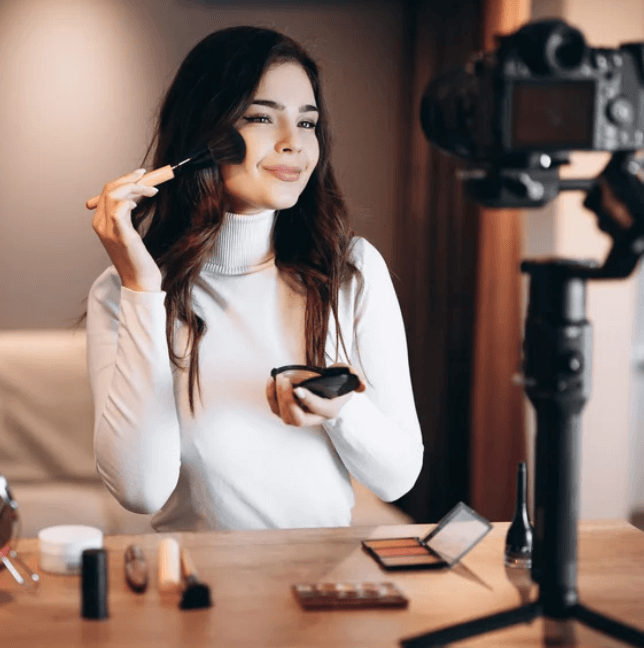
Common Mistakes to Avoid
Even well-intentioned campaigns can fall flat if you don’t plan carefully. Watch out for these common pitfalls:
Prioritizing follower count over audience relevance or authenticity
Over-controlling content creation and stifling the influencer’s voice
Failing to outline clear deliverables, timelines, and payment terms
Ignoring proper FTC disclosures or failing to secure usage rights
Not nurturing long-term relationships, treating influencers like one-off transactions
How Modelia Can Help
If you're looking to streamline influencer campaigns and generate ready-to-use content that aligns perfectly with your brand, Modelia offers AI tools built specifically for fashion marketing teams. From creating on-brand product visuals to helping you test creative concepts before a campaign goes live, Modelia gives you the ability to scale your marketing while maintaining consistency and quality. Whether you're working with micro-influencers or launching a full-scale ambassador program, Modelia can enhance the content workflow and give your team more time to focus on strategy and results.
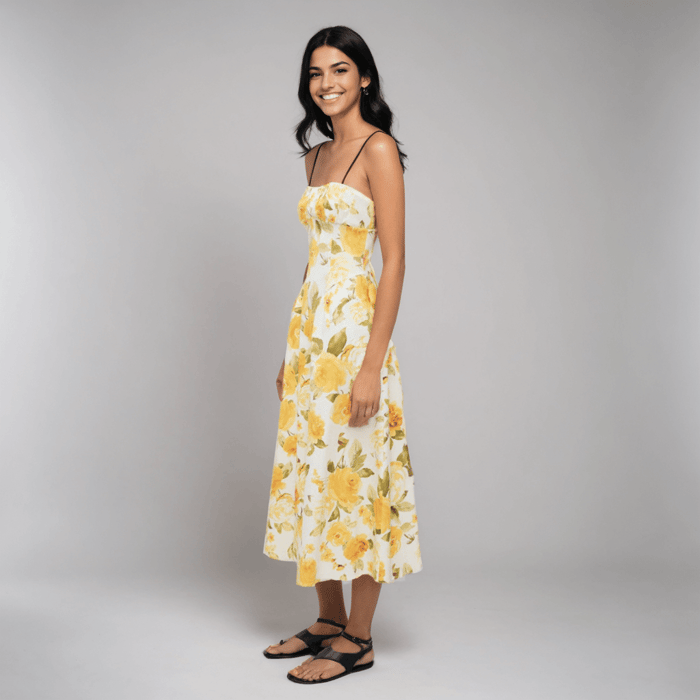
Try Modela for free and start enhancing your influencer campaigns
The Ultimate User Guide to Virtual Try-On Features: How to Get the Best Experience
Virtual try-on technology is transforming online shopping, letting you see how clothes, accessories, shoes, or makeup look before you buy. But to get the most out of it, there are tips and tricks that can enhance your experience. This guide will help you navigate virtual try-on tools like a pro.
What is Virtual Try-On?
Virtual try-on combines augmented reality (AR), artificial intelligence (AI), and sometimes 3D modeling to simulate products on a user. Whether it’s trying on a pair of glasses, a jacket, or a lipstick shade, virtual try-on creates a realistic preview without the need to visit a physical store.
How to Get Started
Choose the Right Platform
Not all virtual try-on tools are created equal. Look for platforms that support high-quality 3D models, accurate sizing, and realistic textures. Many fashion and beauty brands now integrate these features directly into their apps or websites.Provide Accurate Information
For clothing or shoes, entering your correct measurements ensures the virtual fit is realistic. For accessories like glasses or jewelry, provide your face shape or hand size if the tool allows.Use Proper Lighting
When using a live camera try-on, natural or well-lit rooms give more accurate previews of colors and textures. Avoid dark or overly bright environments.Experiment with Styles and Colors
Don’t hesitate to try multiple styles, sizes, and colors. Virtual try-on allows risk-free experimentation, helping you discover options you might not have considered.Rotate and Zoom
Take advantage of interactive features like rotation and zoom. Viewing items from multiple angles ensures you understand how they look in motion and from different perspectives.Compare with Real Products
Some platforms allow side-by-side comparisons or AR overlays on your existing wardrobe. This helps visualize how new items complement what you already own.
Tips for a Better Experience
Use the Latest App Version: Updates often improve accuracy, performance, and new features.
Check Reviews and Demos: Some tools offer sample try-ons or reviews that show real-life results.
Take Screenshots: Save your favorite looks for future reference or to share with friends before buying.
Combine with Size Recommendations: Some platforms pair virtual try-on with AI size suggestions for the best fit.
Benefits of Virtual Try-On
Confidence in Your Purchases: Reduce uncertainty about fit and style.
Saves Time and Hassle: No need for multiple store visits or returns.
Personalized Shopping: Try colors, styles, and accessories tailored to your preferences.
Eco-Friendly: Reduces returns and shipping waste, benefiting the environment.
Recap
Influencer marketing for fashion brands is more than a trend, it’s a strategic growth lever. With the right partnerships, you can amplify your message, foster community, and stand out in a saturated market. It’s not just about one viral post; it’s about building consistent, credible visibility and trust with your audience.
Start with a clear strategy, experiment with different formats, and prioritize long-term relationships with creators who genuinely love your brand. The returns will multiply over time, in brand equity, engagement, and revenue.
FAQ: Influencer Marketing For Fashion Brands
What is influencer marketing for fashion brands?
Influencer marketing involves collaborating with social media personalities to promote fashion products. Influencers leverage their audience to increase brand awareness and drive sales.
Why is influencer marketing effective for fashion brands?
It helps brands reach targeted audiences, build trust through authentic endorsements, showcase products in real-life contexts, and generate engagement that traditional ads may not achieve.
How can fashion brands choose the right influencers?
Brands should consider the influencer’s audience, engagement rate, niche relevance, authenticity, and alignment with the brand’s values and aesthetic. Micro-influencers often deliver higher engagement with specific communities.
What types of campaigns work best for fashion influencer marketing?
Popular campaigns include sponsored posts, try-on hauls, unboxing videos, giveaways, collaborative collections, and Instagram or TikTok stories showcasing outfits in action.
How would you rate this article:
Related Articles
- How to Dress for a Job Interview: Professional Outfits That Make an Impact
- Top AI Modeling Tools Transforming Fashion Design
- The Best Clothing for Travel: Fashion Staples for Comfort and Style
- Virtual Makeup Try-On: How AR Technology is Revolutionizing Beauty Shopping
- How to Draw a Dress: Easy Fashion Sketch Tutorial
- 7 Best Product Photography Software to Enhance Your Ecommerce Images with the Right Tools
- Best 5 AI Color Changer Tools to Instantly Transform Images and Visual Content
- Autumn Fashion Trends 2025: Key Styles & Outfit Ideas
- 5 AI Tools for Image Enhancement to Achieve Professional-Quality Results
- Fashion Modeling Basics: Trends, Innovations, and the Future of the Industry

